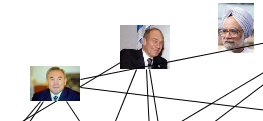
A tool would have a handle with grooves to hold tight. It’s easy to swing into place.

It would have an inhuman steel end. An end unlike my soft flesh. Perhaps the nail dead at the end of the digit.


A tool scratches out its world. A tool outreaches, extends the hand in sight, and where it doesn’t fit (so often), it scrapes a groove. It claws what it can afford.

And when it’s finished there’s a pop, a clunk, a ping, and a burr to be swept away. When it’s left, the palm is open to stroke the surface of the craft. A satisfaction puts the tool away.

So few parts of the world fit this tool, other than my hand. Perhaps they are not made for work but for the stroking, the holding, and the gripping turn.

Which is why I need so many of them, within reach, laid out in frames, carried in bags, on belts, and ready-at-hand and unforseen.

Then, I’ll pause in the workshop and not do anthing at all. I’ll hold these tools in my mind which is not how to use them.
Images all from the TAPoR portal and TAPoRware.

 The design firm
The design firm 








 (Sparkline of US deficit over time)
(Sparkline of US deficit over time) 